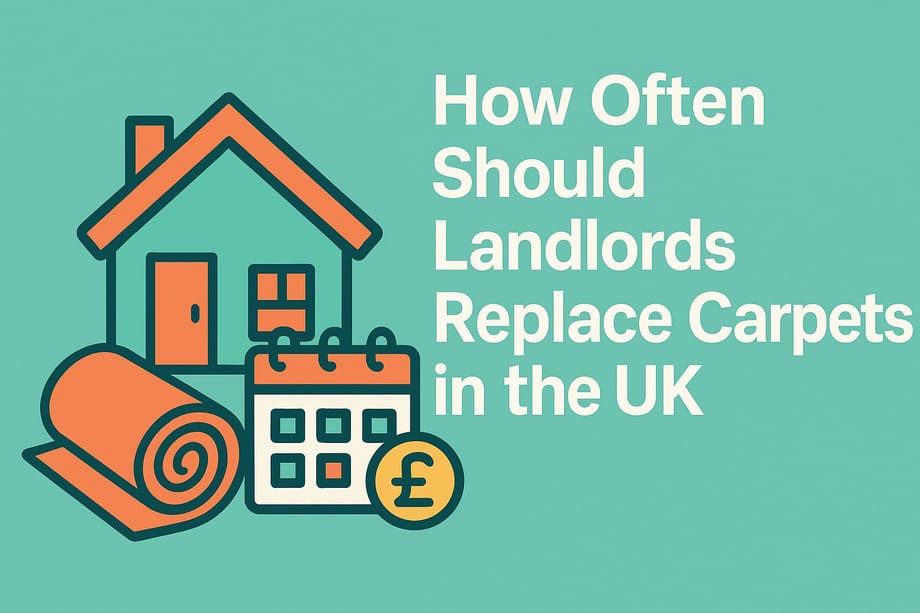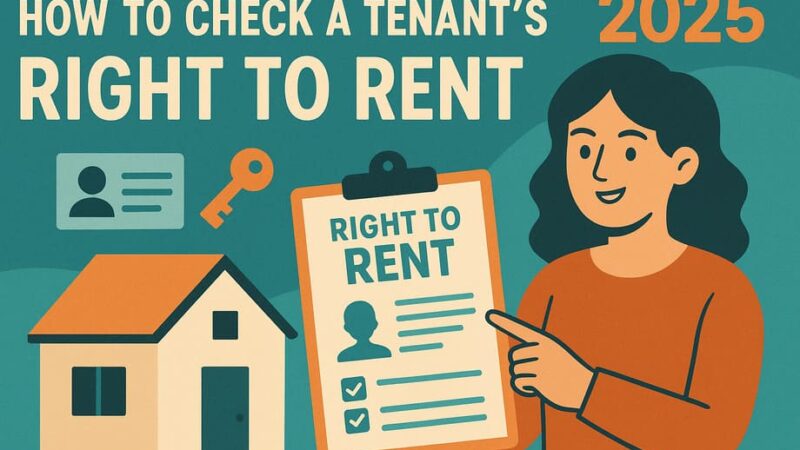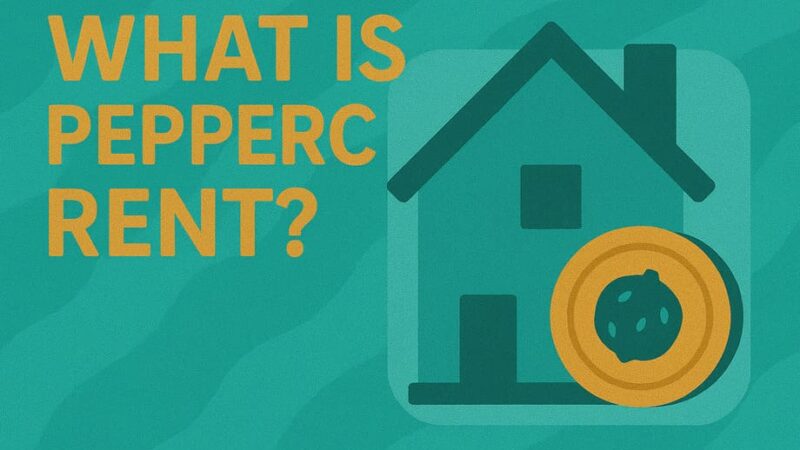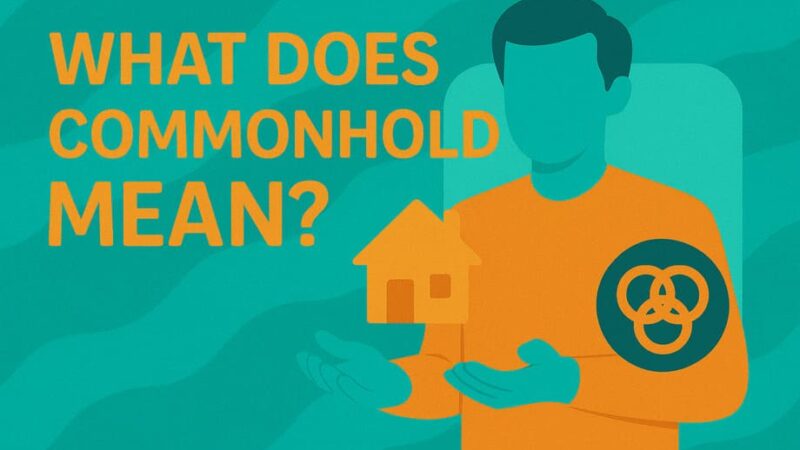How Often Should Landlords Replace Carpets in the UK?

One of the most common disputes between landlords and tenants involves carpet condition and replacement costs. Whether you’re a landlord wondering about your legal obligations or a tenant concerned about deposit deductions, understanding UK law around carpet replacement can save you significant stress and money. This comprehensive guide explains exactly when landlords must replace carpets, what constitutes fair wear and tear, and how to navigate carpet-related disputes effectively.
Do Landlords Have to Replace Carpets by Law in the UK?
No specific law requires landlords to replace carpets at set intervals. However, landlords have legal responsibilities to maintain their rental properties in safe, habitable condition throughout the tenancy period.
Legal responsibilities of landlords center around property safety and habitability rather than cosmetic improvements. Under UK housing regulations, landlords must ensure carpets don’t pose health risks or safety hazards to tenants. This means replacing carpets that harbor harmful bacteria, become trip hazards due to wear, or create unsanitary living conditions.
Health and safety obligations can trigger mandatory carpet replacement. If carpets develop mold, harbor pest infestations like dust mites, or become so worn they expose sharp nails or create tripping hazards, landlords must address these issues promptly to maintain habitability standards.
Difference between wear and tear vs damage forms the foundation of carpet replacement law. Fair wear and tear means changes caused by normal everyday living and is not the tenant’s fault, while damage results from negligence, accidents, or misuse by tenants.
Normal wear and tear includes gradual carpet fading, minor indentations from furniture, light traffic patterns, and general aging over time. Worn and discolored carpeting, as well as indentations made by furniture, is generally considered wear and tear.
Tenant damage encompasses burns, severe stains, tears, cuts, or damage from pets beyond reasonable expectations. If it is burned, stained or torn, that is classed as damage that tenants may be responsible for financially.
Tenancy agreement clauses can establish specific maintenance expectations but cannot override fair wear and tear principles. Many agreements include carpet cleaning requirements at tenancy end, but landlords cannot charge tenants for improvements or “betterment” beyond the original condition.
Average Lifespan of Carpets in Rental Properties
Industry standard expectations provide guidelines for reasonable carpet replacement timing in rental properties. Adjudicators take a consistent approach to the deterioration of décor and carpets, allowing five years for their lifespan in a tenanted property, and just three years for student tenancies.
Standard carpet lifespan varies significantly based on quality and usage patterns. A good carpet might last up to 10 years, while something cheap could need replacing after just 3 years. Quality carpets in low-traffic areas may exceed 10 years, while budget options in high-traffic locations may require replacement within 3-5 years.
Factors affecting carpet wear significantly impact replacement timing and fair wear expectations:
Foot traffic levels determine wear patterns and replacement frequency. Hallways, living rooms, and entrance areas experience accelerated wear compared to bedrooms or guest rooms. High-traffic zones may show significant wear within 2-3 years even with quality carpets.
Number and type of occupants influence wear and tear expectations. More wear and tear is allowed for a family with children moving out after 5 years than for a single person moving out after 6 months. Student properties typically see more intensive use, hence the reduced 3-year lifespan expectation.
Pet ownership creates additional wear through claws, accidents, hair, and odors. Properties allowing pets should expect accelerated carpet deterioration and may benefit from hard flooring alternatives in high-use areas.
Smoking tenants contribute to faster deterioration through ash burns, discoloration, and persistent odors that may require complete replacement rather than cleaning.
Initial carpet quality determines longevity expectations. Premium carpets with quality underlay may exceed industry averages, while budget options may require replacement sooner than standard timelines suggest.
Tenant Rights Regarding Carpet Replacement
Tenants have the right to request carpet replacement when carpets become unsafe, unsanitary, or significantly impact habitability. If a tenant notices that the carpet is worn out or damaged beyond normal wear and tear, they have the right to request a replacement.
Landlord response obligations require prompt attention to legitimate replacement requests. Landlords are obliged to respond to such legitimate requests promptly and arrange for the necessary replacements. Failure to address safety or health concerns may result in local authority involvement.
Valid replacement grounds include carpets that pose health risks through bacterial growth, create safety hazards like exposed tack strips, harbor persistent pest infestations, or have become so worn they’re unsuitable for normal living.
Deposit dispute protections prevent landlords from charging tenants unfairly for carpet replacement. Your landlord cannot charge you the full cost of a replacement item if it could have been cleaned or repaired for a cheaper price.
Age-based protections shield tenants from full replacement costs. The carpet is 5 years old. A new carpet of similar quality costs £250. It might be reasonable for the landlord to use £125 of the deposit towards the new carpet.
When tenants may be charged for carpet damage includes severe stains that cannot be professionally cleaned, burns from cigarettes or appliances, tears from moving furniture improperly, or damage from unauthorized pets.
Documentation importance cannot be overstated for protecting tenant rights. Take detailed photos of carpet condition at move-in, report existing damage immediately, and maintain records of any incidents that might affect carpet condition during tenancy.
Dispute resolution options include negotiation with landlords, mediation through deposit protection schemes, or involvement of local housing authorities if health and safety concerns arise.
Tips for Landlords to Extend Carpet Lifespan
Choose durable carpets appropriate for rental properties to minimize replacement frequency and tenant disputes. Commercial-grade carpets with solution-dyed fibers resist stains better than residential options, while loop pile construction handles heavy traffic more effectively than cut pile.
Quality underlay investment significantly extends carpet life and reduces replacement costs. High-density underlay absorbs impact, reduces wear patterns, and provides better insulation, making the property more attractive to tenants while protecting your flooring investment.
Strategic carpet cleaning and maintenance programs can double carpet lifespan in rental properties. Schedule professional cleaning between tenancies, address stains immediately when reported, and consider interim cleaning for long-term tenants to prevent irreversible damage.
High-traffic area protection reduces premature wear in predictable locations. Install carpet runners in hallways, use protective mats at entrances, and consider transition strips between rooms to minimize edge wear and fraying.
Tenant education about carpet care creates better outcomes for everyone. Provide simple care instructions, encourage immediate stain reporting, and establish clear expectations about professional cleaning requirements at tenancy end.
Consider hard flooring alternatives for properties with challenging conditions. Laminate, luxury vinyl plank (LVP), or engineered wood flooring costs more initially but eliminates carpet replacement cycles, reduces maintenance disputes, and appeals to tenants with allergies or pets.
Regular inspection programs identify carpet issues before they become major problems. Quarterly inspections during long tenancies allow early intervention for stains or damage, preventing minor issues from requiring full replacement.
Quality documentation protects against unfair tenant claims and supports legitimate deposit deductions. Maintain purchase receipts, photograph carpet condition before each tenancy, and create detailed inventory reports that establish baseline conditions.
FAQs
Do landlords have to provide brand new carpets?
No, landlords are not required to install new carpets for each tenancy. They must provide carpets that are clean, safe, and suitable for habitation, but existing carpets in good condition are perfectly acceptable. There are no rules about how often a private landlord should replace carpets or furniture.
Can tenants demand new carpets at the start of tenancy?
Tenants cannot demand new carpets unless existing carpets pose health or safety risks. When you sign a tenancy agreement, you accept the property’s current condition, including carpet age and appearance. However, carpets must be professionally cleaned and free from health hazards.
Who pays for carpet replacement during tenancy?
Landlords pay for replacement due to fair wear and tear, end-of-lifespan deterioration, or health and safety issues not caused by tenant negligence.
Tenants pay when damage exceeds normal wear and tear, such as severe stains, burns, tears, or damage from unauthorized pets. As a rule of thumb: if it’s your fault, it comes out of your pocket.
Shared costs may apply when carpets near their expected lifespan suffer tenant damage. Adjudicators consider carpet age, quality, expected remaining life, and extent of damage when determining fair cost apportionment between landlords and tenants.
What constitutes normal carpet wear and tear?
Normal wear and tear includes gradual fading from sunlight, minor traffic patterns, small indentations from furniture, light soiling that professional cleaning can address, and general aging consistent with the carpet’s expected lifespan and tenant demographics.
How often should landlords replace carpets?
No legal requirement exists for specific replacement intervals. Adjudicators typically allow five years for carpet lifespan in standard tenancies and three years for student properties, but actual replacement depends on condition, quality, and usage patterns.
When should tenants expect carpet replacement?
Tenants can reasonably expect replacement when carpets become health hazards, safety risks, or so worn they’re unsuitable for normal living. Cosmetic preferences or minor wear don’t justify replacement demands, but legitimate habitability concerns require landlord response.
Are professional carpet cleaning costs fair?
Professional cleaning costs are typically tenant responsibility if specified in tenancy agreements, but landlords cannot charge for cleaning to a higher standard than existed at tenancy start. Betterment applies to both ‘condition’ and ‘cleanliness’ – claiming for a professional clean when the property was only domestically clean at the start would amount to betterment.
The key to avoiding carpet-related disputes lies in clear communication, proper documentation, and understanding that both parties have reasonable rights and responsibilities. Landlords must maintain safe, habitable conditions while tenants must care for the property responsibly and accept normal aging of fixtures and fittings.
Last Updated on August 30, 2025 by James Cartwright







